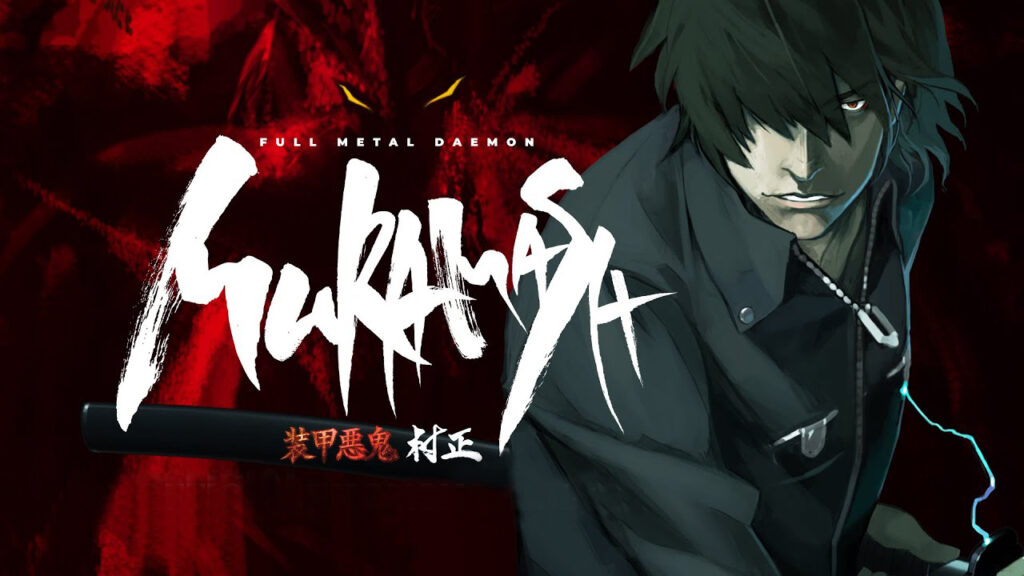 It’s tough being a visual novel fan as we are the niche within a niche within a niche. Anime fans are likely to read manga and some even read light novels and some may even read web novels. But rarer than that is the anime fan that reads visual novels. So being a western VN fan can be quite painful when you see that some of the most highly lauded visual novels remain in a language you do not understand. Thankfully in recent times a lot of greatest hits of the Visual novel industry have been localised but among the white whales of long sought after localisations is Muramasa. Sadly the rights to localise this title lay in the hands of JAST who is a company rather known to take years for a single release and seem to have an iron grip on all Nitroplus works. Considering how long it takes for them to do a single release many thought that we may never be able to experience Muramasa. But straight out of nowhere JAST announced that Muramasa would release within a month pretty much catching the entire VN community off guard. Thus here we have it, the once claimed untranslatable VN is now available to read for English audiences. I might as well say from the outset that this is one of those VN were going in blind is the best option and while I will be avoiding spoilers it may be best to experience this on your own before looking at this review provided you are interested. That said if you don’t have an interest then maybe this little review of mine could get you intrigued. If you wish to know if I recommend this visual novel then my answer is absolutely yes.
It’s tough being a visual novel fan as we are the niche within a niche within a niche. Anime fans are likely to read manga and some even read light novels and some may even read web novels. But rarer than that is the anime fan that reads visual novels. So being a western VN fan can be quite painful when you see that some of the most highly lauded visual novels remain in a language you do not understand. Thankfully in recent times a lot of greatest hits of the Visual novel industry have been localised but among the white whales of long sought after localisations is Muramasa. Sadly the rights to localise this title lay in the hands of JAST who is a company rather known to take years for a single release and seem to have an iron grip on all Nitroplus works. Considering how long it takes for them to do a single release many thought that we may never be able to experience Muramasa. But straight out of nowhere JAST announced that Muramasa would release within a month pretty much catching the entire VN community off guard. Thus here we have it, the once claimed untranslatable VN is now available to read for English audiences. I might as well say from the outset that this is one of those VN were going in blind is the best option and while I will be avoiding spoilers it may be best to experience this on your own before looking at this review provided you are interested. That said if you don’t have an interest then maybe this little review of mine could get you intrigued. If you wish to know if I recommend this visual novel then my answer is absolutely yes. 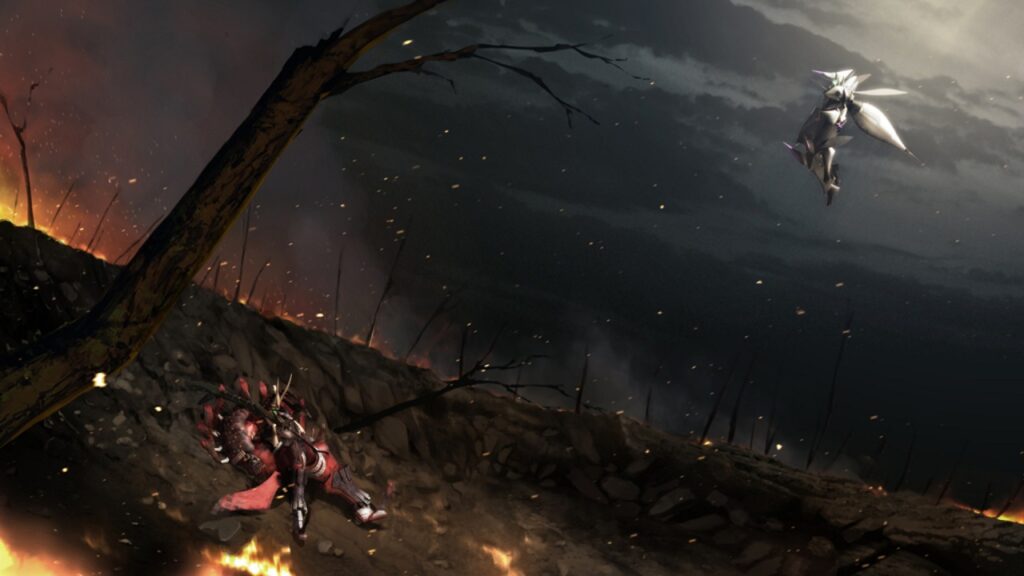 The beginning of Muramasa declares itself to not be a story of heroes and indeed the central protagonists are fair from the ideals of traditional heroes. But I would say it’s central theme is heroism and the brutal truths of it. I originally started Muramasa with a bit of disappointment as past the prologue I was greeted once again with a teenaged protagonist going to a highschool with his female childhood friend waking him up and doing a poor job of hiding her crush on him. The opening chapter of Muramasa is it’s weakest as while it is intentionally setting up the standard cliches, it acts more as a device to set up the world and a bit of misdirection. For anyone put off by these teenaged cohorts, I will say their significance and presence in the story does drop dramatically after the first chapter, much to my relief. They are here mainly so we can have a schoolteacher lament how Yamato(The old name for Japan) has been ruled by a dictatorship under the Rokuhara shogunate after an alternative history World War II and now people are suffering great injustices. They can do nothing about this as the complaints department is by that stump with the giant robo samurai that is welding an axe. With the authorities the only ones possessing mecha of massive power, the civilian population have no chance of revolt. To top things off a strange godlike white mecha has been flying around Japan and making people kill each other as it drives them insane with it’s hymn. This white mecha is our central antagonist and our protagonist is the man hunting it down with his mecha spider companion Muramasa to kill it and end it’s random masscares. I could say this man is our hero but as aptly put by the game itself, this story has no heroes.
The beginning of Muramasa declares itself to not be a story of heroes and indeed the central protagonists are fair from the ideals of traditional heroes. But I would say it’s central theme is heroism and the brutal truths of it. I originally started Muramasa with a bit of disappointment as past the prologue I was greeted once again with a teenaged protagonist going to a highschool with his female childhood friend waking him up and doing a poor job of hiding her crush on him. The opening chapter of Muramasa is it’s weakest as while it is intentionally setting up the standard cliches, it acts more as a device to set up the world and a bit of misdirection. For anyone put off by these teenaged cohorts, I will say their significance and presence in the story does drop dramatically after the first chapter, much to my relief. They are here mainly so we can have a schoolteacher lament how Yamato(The old name for Japan) has been ruled by a dictatorship under the Rokuhara shogunate after an alternative history World War II and now people are suffering great injustices. They can do nothing about this as the complaints department is by that stump with the giant robo samurai that is welding an axe. With the authorities the only ones possessing mecha of massive power, the civilian population have no chance of revolt. To top things off a strange godlike white mecha has been flying around Japan and making people kill each other as it drives them insane with it’s hymn. This white mecha is our central antagonist and our protagonist is the man hunting it down with his mecha spider companion Muramasa to kill it and end it’s random masscares. I could say this man is our hero but as aptly put by the game itself, this story has no heroes.  There are three key figures of this story and each kill for a different factor of heroism. Ayane Ichijou, killing in the name of standing for what’s right. Ootori Kanae, killing in the name of personal satisfaction. Minato Kageaki, killing in the name of the greater good. Or you can put them in one word as Justice, Vengeance and Altruism. As they go through the story these viewpoints are brought under serious scrutiny to a degree where even the characters themselves must reconcile with the contradictions in their viewpoints. For what is justice when the villains you kill also have loved ones demanding justice? What is vengeance when the target of your hate is grateful for you seeking vengeance on them and denying you the simple primal satisfaction of ending their life? What is altruism when you commit crimes for which the world may forgive you for but can never allow you to forgive yourself? At the bottom line, killing is killing and no motive can wipe away the sin. This moral could be heavy handed but Muramasa recognises that there are situations where there is no choice but to kill however it criticizes any attempt to portray the act as noble or celebrated. It is a story in a constant struggle with morality where life is far too complicated to simply divide into black or white. I would say this is the part of Muramasa that makes it shine, that makes it a classic visual novel with a story few could replicate. It is in this facet that Muramasa remains undefeated.
There are three key figures of this story and each kill for a different factor of heroism. Ayane Ichijou, killing in the name of standing for what’s right. Ootori Kanae, killing in the name of personal satisfaction. Minato Kageaki, killing in the name of the greater good. Or you can put them in one word as Justice, Vengeance and Altruism. As they go through the story these viewpoints are brought under serious scrutiny to a degree where even the characters themselves must reconcile with the contradictions in their viewpoints. For what is justice when the villains you kill also have loved ones demanding justice? What is vengeance when the target of your hate is grateful for you seeking vengeance on them and denying you the simple primal satisfaction of ending their life? What is altruism when you commit crimes for which the world may forgive you for but can never allow you to forgive yourself? At the bottom line, killing is killing and no motive can wipe away the sin. This moral could be heavy handed but Muramasa recognises that there are situations where there is no choice but to kill however it criticizes any attempt to portray the act as noble or celebrated. It is a story in a constant struggle with morality where life is far too complicated to simply divide into black or white. I would say this is the part of Muramasa that makes it shine, that makes it a classic visual novel with a story few could replicate. It is in this facet that Muramasa remains undefeated. 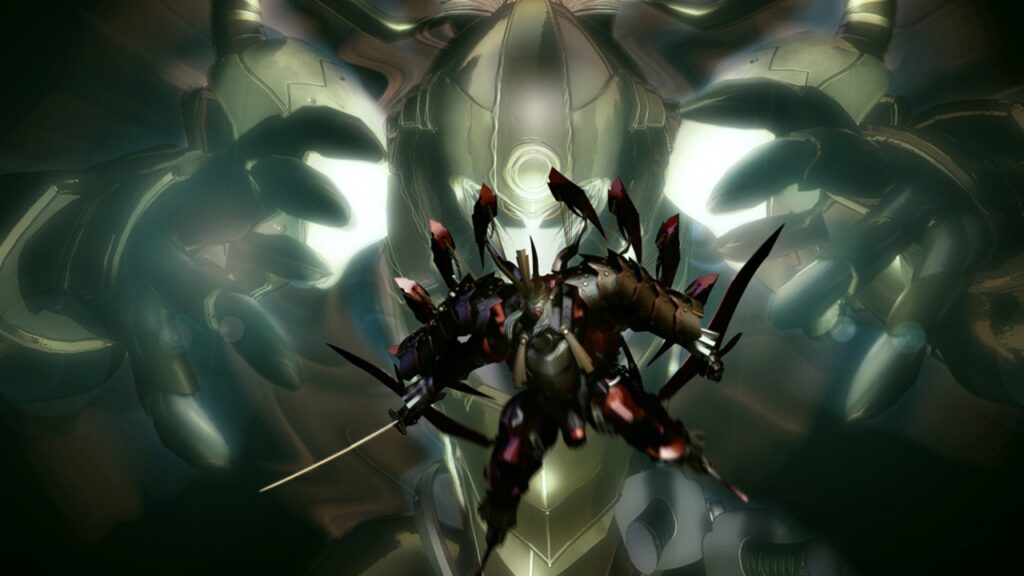 The plot of Muramasa is a truly interesting one though it may surprise you to hear that the worst part of this story is when the characters get into samurai mech suits to have aerial sword fights. I can almost hear you say “shouldn’t that be the part where the story would be at its most interesting” and I thought as such too considering they are a big selling point. But you see the central problem lies in a certain trope you are no doubt familiar with, that being the trope of characters explaining their strategies and attacks. This trope is already fairly ridiculous in anime where the option of show don’t tell is available and is likely a carryover from the manga medium where such things are harder to convey. However when it comes to Muramasa the fights are almost nothing but pure overwhelming exposition. There isn’t actually much in the way of the fighting as most are decided with a few moves and Muramasa seems to be taking inspiration from Samurai movies where fights are decided with a single blow. I am not kidding when I say there is a fight in this story which basically consists of two people edging closer to each other and striking once, it takes 30 minutes. So much detail on techniques and planning that the protagonist almost becomes an educational instructor on the finer arts of fictional mecha swordsmanship, which is likely due to the writer being a kendo instructor. This gets even more absurd when characters explaining how they avoided an attack or performed a counterattack come back to bite them as thanks to that explanation the enemy now knows how to beat it. One of the first fights is literally our protagonist teaching his enemy, who is unfamiliar with fighting in mecha, how to swordfight in a mecha which turns the fight around when his enemy takes the lessons to heart and now poses an actual threat. We have a cutaway in the middle of a fight where the protagonist sees a move and goes on a massive tangent over who created the move, why it was so powerful, it’s role in history and how that move was passed on to a japanese swordsman which makes for a giant pace killer in what is supposed to be an intense fight. If there is a critical flaw to the story of Muramasa then it would be undoubtedly this. This story has battles which on paper sound amazing, with the final battle being of such ludicrous degrees of the One Punch Man season 1 finale but all of them get bogged down once the exposition comes in to crash the pacing to a full halt.
The plot of Muramasa is a truly interesting one though it may surprise you to hear that the worst part of this story is when the characters get into samurai mech suits to have aerial sword fights. I can almost hear you say “shouldn’t that be the part where the story would be at its most interesting” and I thought as such too considering they are a big selling point. But you see the central problem lies in a certain trope you are no doubt familiar with, that being the trope of characters explaining their strategies and attacks. This trope is already fairly ridiculous in anime where the option of show don’t tell is available and is likely a carryover from the manga medium where such things are harder to convey. However when it comes to Muramasa the fights are almost nothing but pure overwhelming exposition. There isn’t actually much in the way of the fighting as most are decided with a few moves and Muramasa seems to be taking inspiration from Samurai movies where fights are decided with a single blow. I am not kidding when I say there is a fight in this story which basically consists of two people edging closer to each other and striking once, it takes 30 minutes. So much detail on techniques and planning that the protagonist almost becomes an educational instructor on the finer arts of fictional mecha swordsmanship, which is likely due to the writer being a kendo instructor. This gets even more absurd when characters explaining how they avoided an attack or performed a counterattack come back to bite them as thanks to that explanation the enemy now knows how to beat it. One of the first fights is literally our protagonist teaching his enemy, who is unfamiliar with fighting in mecha, how to swordfight in a mecha which turns the fight around when his enemy takes the lessons to heart and now poses an actual threat. We have a cutaway in the middle of a fight where the protagonist sees a move and goes on a massive tangent over who created the move, why it was so powerful, it’s role in history and how that move was passed on to a japanese swordsman which makes for a giant pace killer in what is supposed to be an intense fight. If there is a critical flaw to the story of Muramasa then it would be undoubtedly this. This story has battles which on paper sound amazing, with the final battle being of such ludicrous degrees of the One Punch Man season 1 finale but all of them get bogged down once the exposition comes in to crash the pacing to a full halt. 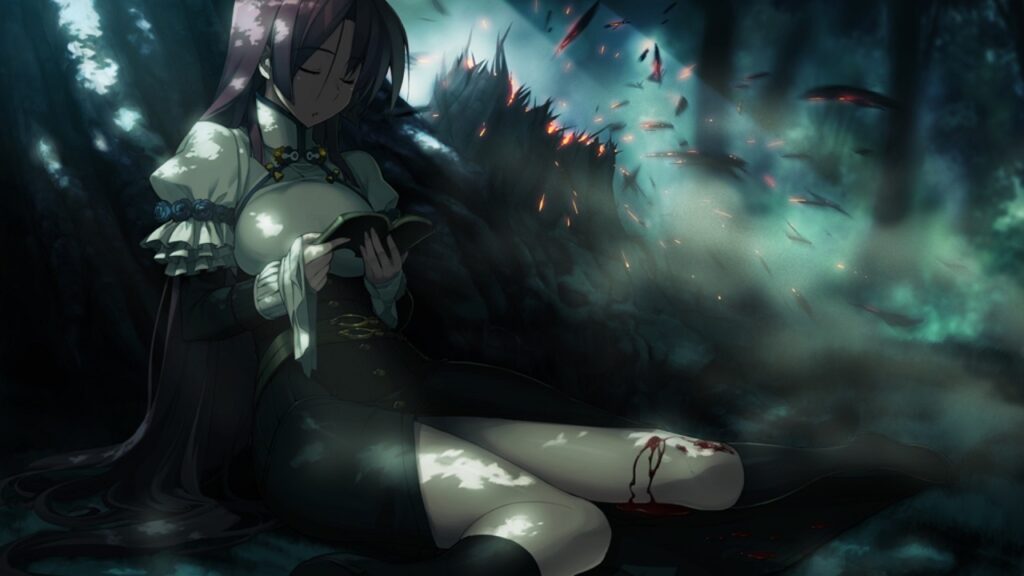 To continue a bit on my negatives, Muramasa also has a weird sense of humour as in this story of political tensions, morality, corruption, despair and war that the writer decided to include 90s slapstick harem humor. One character in particular suffers heavily for this as they were decided to be the slapstick monkey where she has a running comedy act with her maid. It’s unfortunate as the personality she displays under that facade is actually quite interesting so to have her assigned to be the comic relief is disappointing. I will admit there are occasions where the protagonist’s deadpan response to these incidents is funny as he’s about as up for it as the reader. But for the most part it’s more a distraction rather than a relief. Then there’s the H-Scenes, once again fairly worthless and inconsequential but at least the writer made them brief with most only lasting about 2 or 3 minutes. Well if we must have them then better they are quick and painless. Though those of more sensitive dispositions could find them a bit too much as even I admit they are quite distasteful. Other than that I would say that I am not fond of having the text box in the middle of the screen with boxes for showing character facial expressions which I understand is a compromise due to being unable to present English in the same vertical style as it originally was in the japanese version of the game. The music is just fine, passible but these last two complaints of mine are fairly minor.
To continue a bit on my negatives, Muramasa also has a weird sense of humour as in this story of political tensions, morality, corruption, despair and war that the writer decided to include 90s slapstick harem humor. One character in particular suffers heavily for this as they were decided to be the slapstick monkey where she has a running comedy act with her maid. It’s unfortunate as the personality she displays under that facade is actually quite interesting so to have her assigned to be the comic relief is disappointing. I will admit there are occasions where the protagonist’s deadpan response to these incidents is funny as he’s about as up for it as the reader. But for the most part it’s more a distraction rather than a relief. Then there’s the H-Scenes, once again fairly worthless and inconsequential but at least the writer made them brief with most only lasting about 2 or 3 minutes. Well if we must have them then better they are quick and painless. Though those of more sensitive dispositions could find them a bit too much as even I admit they are quite distasteful. Other than that I would say that I am not fond of having the text box in the middle of the screen with boxes for showing character facial expressions which I understand is a compromise due to being unable to present English in the same vertical style as it originally was in the japanese version of the game. The music is just fine, passible but these last two complaints of mine are fairly minor. 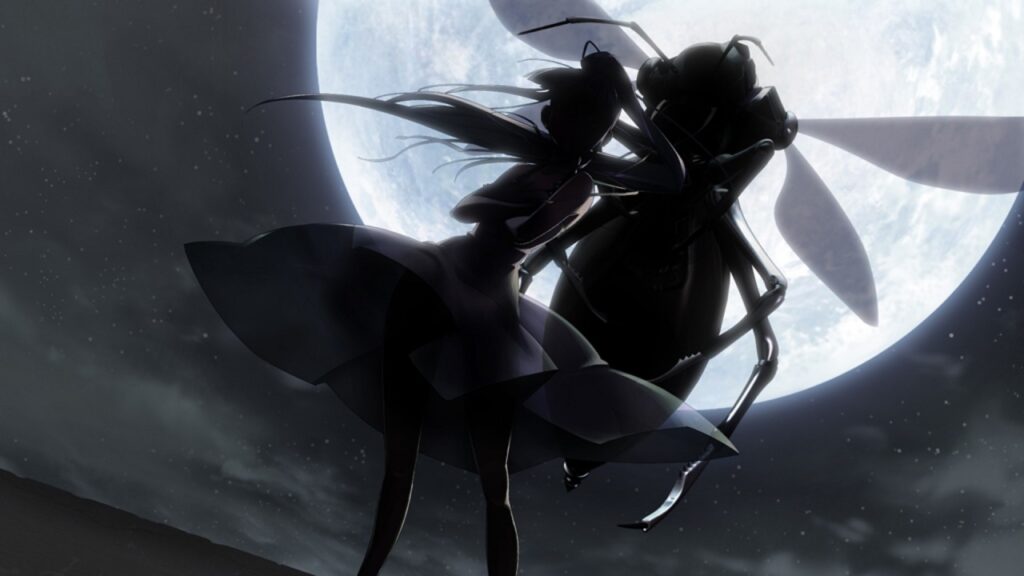 This VN contains three primary routes with two side endings and is one of the few VNs where I could claim that no route is weak. Some may disagree with them likely pointing to the vengeance route in particular but I personally found that to be a cut above any side route in any other VN. My final playtime clocked in a 57 hours and 23 minutes though yours could go up to 65 hours if you don’t read as fast as I do. Route choice is handled in an odd manner whereas other VNs generally function on the principle of flattering the girl you like until you land on their route, Muramasa instead highly discourages that. Instead you have an affection meter in game and it’s encouraged to keep affection balanced between heroines at least til the end of the common route which is five chapters long. In a way I wish they could have kept it going for longer as managing it was rather novel and not punishing as mistakes were easy to fix with saves and fast skip. There are also ponts where Muramasa fancies itself an adventure game but these I would say are more of a miss than a hit. Much like 90’s adventure games of old where the solution was often obtuse and nonsensical. The one puzzle I actually like is around the end where I actually had to use math to finish it. If I had a nickel for every time I needed math to finish a Visual Novel then I would have two nickels. It isn’t much but it’s odd that it happened twice and both of those VNs being made by Nitroplus.
This VN contains three primary routes with two side endings and is one of the few VNs where I could claim that no route is weak. Some may disagree with them likely pointing to the vengeance route in particular but I personally found that to be a cut above any side route in any other VN. My final playtime clocked in a 57 hours and 23 minutes though yours could go up to 65 hours if you don’t read as fast as I do. Route choice is handled in an odd manner whereas other VNs generally function on the principle of flattering the girl you like until you land on their route, Muramasa instead highly discourages that. Instead you have an affection meter in game and it’s encouraged to keep affection balanced between heroines at least til the end of the common route which is five chapters long. In a way I wish they could have kept it going for longer as managing it was rather novel and not punishing as mistakes were easy to fix with saves and fast skip. There are also ponts where Muramasa fancies itself an adventure game but these I would say are more of a miss than a hit. Much like 90’s adventure games of old where the solution was often obtuse and nonsensical. The one puzzle I actually like is around the end where I actually had to use math to finish it. If I had a nickel for every time I needed math to finish a Visual Novel then I would have two nickels. It isn’t much but it’s odd that it happened twice and both of those VNs being made by Nitroplus. 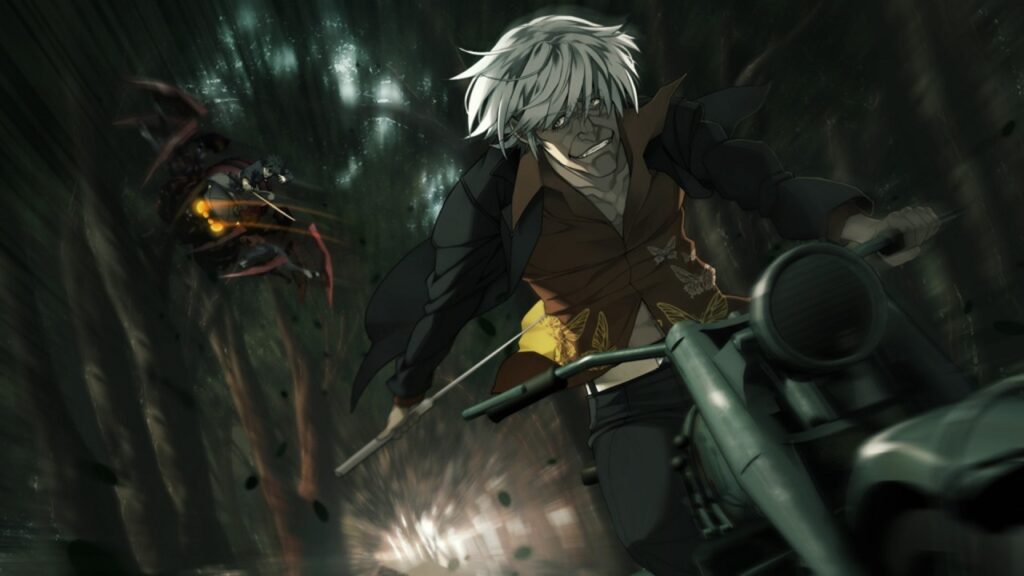 Narahara Ittetsu has only ever written two visual novels for Nitroplus(Not counting a spinoff), Hanachirasu and Full Metal Daemon Muramasa. After writing Muramasa he put down his pen and never wrote anything for Visual novels, anime, manga or any piece of media to this very day. It was thought upon completing Muramasa he decided that he would never top his masterpiece and hereby resigned on a high note. Some lament this as it means there will never be a true Muramasa 2(Though it appears a sequel by another writer is in the works called Project Vermilion) but I would say that if you are asking for a sequel to Muramasa then you missed the point. Muramasa ends with all it’s narrative points tied up in a beautiful knot and to continue from this would potentially cause it to become that which it criticised and hereby undercut it’s original message. I say this without sarcasm or hyperbole, for as many flaws as Muramsa has, it is a true work of art. One likely to linger in the mind long after someone has read it. It is currently the best selling Visual Novel JAST has ever released and that is most definitely for good reason. I will never claim it flawless but the flaws it does have do not degrade the high points of what it does truly right. This is a story quite unlike no other and one that needs the attention it truly deserves.
Narahara Ittetsu has only ever written two visual novels for Nitroplus(Not counting a spinoff), Hanachirasu and Full Metal Daemon Muramasa. After writing Muramasa he put down his pen and never wrote anything for Visual novels, anime, manga or any piece of media to this very day. It was thought upon completing Muramasa he decided that he would never top his masterpiece and hereby resigned on a high note. Some lament this as it means there will never be a true Muramasa 2(Though it appears a sequel by another writer is in the works called Project Vermilion) but I would say that if you are asking for a sequel to Muramasa then you missed the point. Muramasa ends with all it’s narrative points tied up in a beautiful knot and to continue from this would potentially cause it to become that which it criticised and hereby undercut it’s original message. I say this without sarcasm or hyperbole, for as many flaws as Muramsa has, it is a true work of art. One likely to linger in the mind long after someone has read it. It is currently the best selling Visual Novel JAST has ever released and that is most definitely for good reason. I will never claim it flawless but the flaws it does have do not degrade the high points of what it does truly right. This is a story quite unlike no other and one that needs the attention it truly deserves.

Thanks for writing such a detailed review! I admit part of me was kind of considering reading the Japanese version of Muramasa for a while despite being a straight gal because I’ve seen so many fellow advanced Japanese learners give it rave reviews…but then I saw all the rape-related tags for it on vndb…and I tend to try and avoid stories involving rape. It’s too bad too. I saw someone compare Muramasa to Fate/Zero in its themes, and I really liked Fate/Zero. At least I can read your review for it though. Thanks again for writing it!
That’s understandable. For context I will say there are a total of four rape scenes in the story so it’s not something that’s present throughout the whole of it. Though to be fair even the consensual stuff carries a similar tone due to something character related and the very first scene is undeniably the worse as it’s more pure shock value than anything else. That scene is also part of the reason I consider the first chapter of the story the weakest.
If you ever decided to chance it I can say again that at least they are brief so you might be able to rapid click through them in 2 minutes. That or perhaps JAST might manage to get an all ages version on steam with those scenes cut out like they did with You and Me and Her.
Awesome